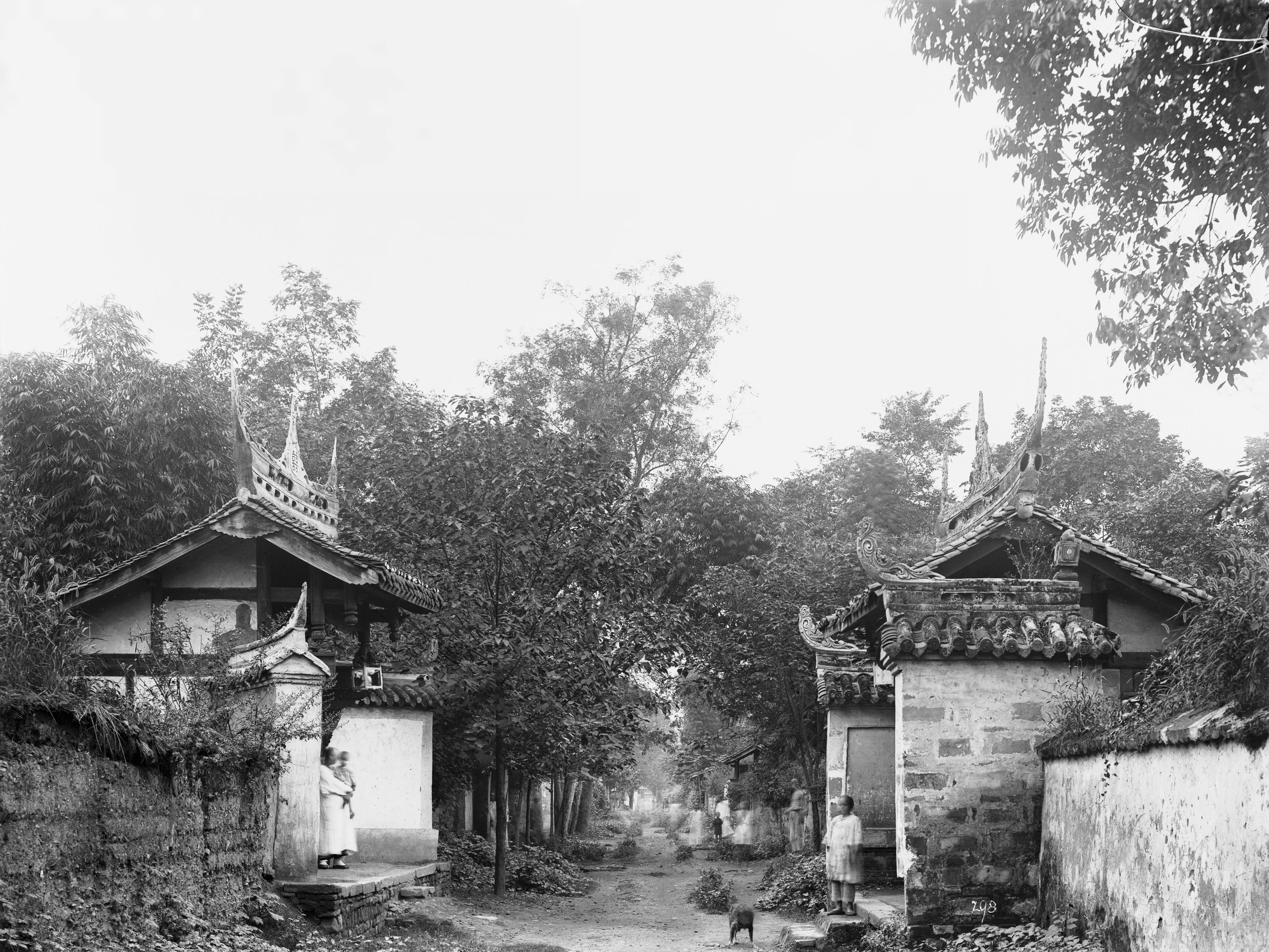When Ernest Henry Wilson obtained a large-format camera before leaving on his third plant-collecting expedition to China in 1907, debate about the artistic potential of photography had been roiling for decades. Given that photographic reproduction was mechanical and chemical—rather than the obvious product of human imagination—skeptics believed that the medium could seldom attain the status of art. It was one thing to paint a landscape, the brushstrokes recording the passage of a hand, but to photograph the same view seemed to be merely representational, without the necessary trace of genius.
Wilson had taken a small camera on previous collecting trips, but in 1907, under the primary auspices of the Arnold Arboretum for the first time, Charles Sprague Sargent directed him to take “the very best possible instrument . . . irrespective of cost.” Sargent asserted that photographs would complement herbarium specimens and seed collections by showing environment and plant form. Wilson’s mandate, therefore, was not artistic production. The camera was treated as a scientific apparatus, the photos simply a record. Today researchers use these images to observe environmental change over the past century—illustrating the continued research value of Wilson’s work (and the promise of unanticipated uses in the future)—yet the best of his images also possess something more, an unmistakable aesthetic allure.



It is clear, examining an unabridged collection of Wilson’s photographs, that the primary results were, indeed, documentarian. When he arrived in China with his new camera, one of his first photographs was of a flowering dove tree (Davidia involucrata). This species had inspired commercial sponsorship for Wilson’s first collecting trip to China in 1899, but in the photograph, the specimen appears relatively indistinct, with a runty stem emerging from the surrounding thicket. It must have taken considerable time for Wilson to set the camera on the tripod and compose the image, while his team of Chinese field assistants halted in their tracks, outside the frame, but the photograph, nonetheless, reads like a snapshot. Documentation was achieved, but little else.



Wilson paused for a winter hiatus in Yichang (then Ichang), a town in western Hubei Province. There, he staged group photos with other Europeans and also composed several still lifes of hunted game. While not the most compelling content, the technical quality of those photographs displays remarkable clarity and intentional composition—a marked improvement from the photographs taken over the previous months—as though he used this winter downtime to focus on the mechanics of operating the new camera. When Wilson returned to collecting that spring, he brought these refined skills with him, and successes accumulated. That November, he took a now iconic image of Ormosia hosiei, a large leguminous tree that was, at that point, unknown to Western botanists. The canopy is hardscrabble, with asymmetrical branches reaching over surrounding fields and over the roof of a small roadside shrine. What is most striking, however, is the organization to the image. The sedan chair that Wilson used sits in one corner of the frame, while several Chinese men rest with large packs in the opposite corner. The photographer’s hand is unmistakable, a sense of deliberate balance.
On later trips, Wilson would occasionally take portraits: men transporting enormous packages of tea, for instance. Yet it is clear that Wilson composed a majority of his images without people, and those who were present, like the men with Ormosia, were carefully posed within the frame or simply standing beside trees for scale. Buildings and streets often look silent, with people patiently standing in the doorways, or not present at all. Certainly, these were bustling communities, and later plant collectors photographed crowds and commotion. Technology could partially explain this trend, given that Wilson’s glass plates exposed more slowly than film, causing motion blur. But the silence also reveals a shade of fiction within the documentary. The photographs still draw Arboretum collectors back to the same locations (and sometimes the same individual trees), revealing not only their scientific or historical value, but also their magic and allure as art.
From “free” to “friend”…
Established in 1911 as the Bulletin of Popular Information, Arnoldia has long been a definitive forum for conversations about temperate woody plants and their landscapes. In 2022, we rolled out a new vision for the magazine as a vigorous forum for tales of plant exploration, behind-the-scenes glimpses of botanical research, and deep dives into the history of gardens, landscapes, and science. The new Arnoldia includes poetry, visual art, and literary essays, following the human imagination wherever it entangles with trees.
It takes resources to gather and nurture these new voices, and we depend on the support of our member-subscribers to make it possible. But membership means more: by becoming a member of the Arnold Arboretum, you help to keep our collection vibrant and our research and educational mission active. Through the pages of Arnoldia, you can take part in the life of this free-to-all landscape whether you live next door or an ocean away.

